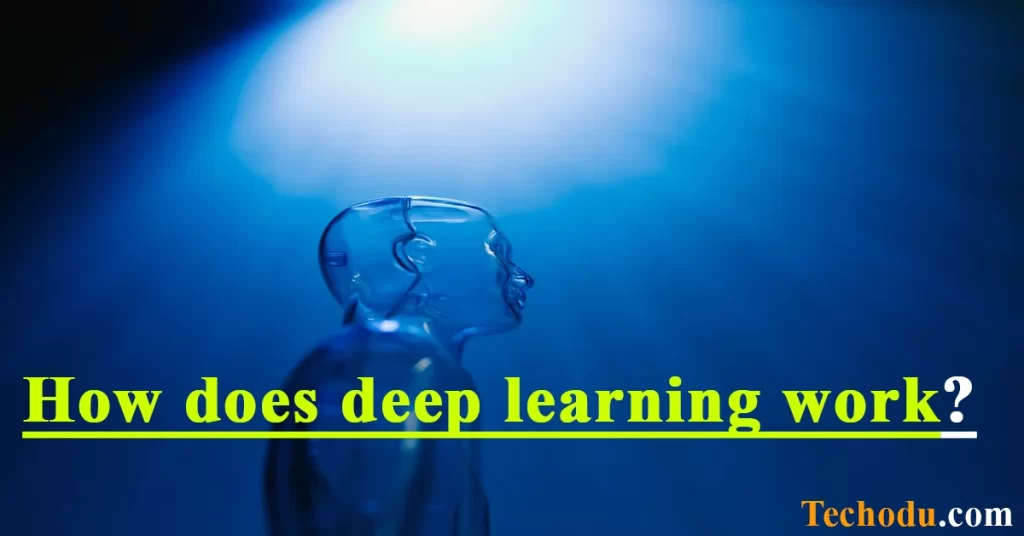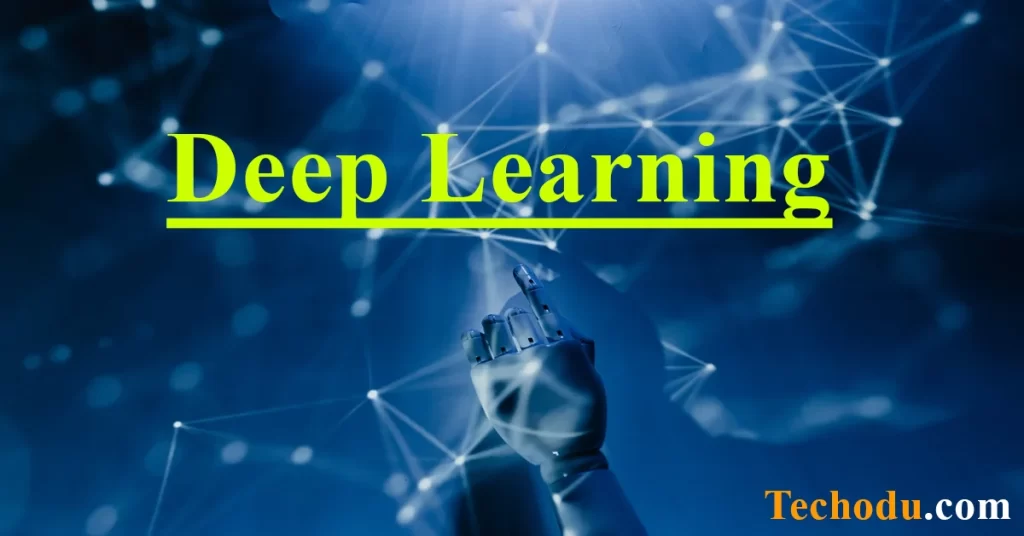Deep Learning (DL) is a subfield of Machine Learning (ML) that uses algorithms similar to how neurons are used in the human brain. DL creates artificial neural networks and layers based on how the human brain works. Deep learning is a machine learning technique that teaches computers what we humans do easily and naturally – learn from the examples we encounter.
You can see deep learning technology in driverless cars that can distinguish red lights from green lights, distinguish people from the curb, and even measure the distance between two cars. The technology enables voice activation of mobile phones, face recognition on TVs, and gestures on personal devices. Deep learning has been attracting a lot of attention in recent years for good reason.
History of Deep Learning
Going back to its origins, deep learning first appeared in 1943. When Warren McCulloch and Walter Pitts used mathematics and algorithms to create computing systems that replicated neural networks. There were some small advances in the 1950s, 1960s, 1970s, and 1980s. The biggest evolution of DL occurred in 1999 when computer processing speed and graphics processing units were developed. In the next decade, clumsy and inefficient systems become 1,000 times faster.
It wasn’t until around 2005 that deep learning started appearing frequently in technical conversations as a term. Jeffrey Hinton and Ruslan Sarakhotdinov published a paper explaining how to train a neural network that consists of multiple layers — one layer at a time — at which point the term became popular. Google took things to the next level in 2012 by using an algorithm that could recognize cats. It’s called the “Cat Experiment,” and uses unsupervised learning to show the system 10,000,000 images of cats and train it to recognize cats. It was a partial success, doing better than its predecessors, but less than 16 percent of cats were recognized.
Google then invested in UK-based intelligence start-up DeepMind two years later, and in 2016 Google’s DeepMind algorithm, AlphaAgo made history by learning the complex board game Go, at a competition in Seoul. Defeat a professional human player.
Deep learning is a subfield of machine learning, a field that continuously learns and improves by studying its own algorithms. DL bases its work on artificial neural networks created to mimic the human mind. Until recently, these neural networks had limited computing power and thus limited complexity.
With the leap forward in big data analytics, neural networks have become increasingly complex and sophisticated. This has resulted in computers accelerating their pace, sometimes faster than the human mind, in observing, learning, and responding to complex situations. Models will continue to be trained using large amounts of labeled data and neural networks with multiple layers. With image classification, translation capabilities, and speech recognition technology, deep learning can even decode pattern recognition without human help at all.
What does deep learning achieve?
Deep learning is part of our daily life. For example, when you upload a photo on Facebook, deep learning helps you by automatically tagging your friends. If you use a digital assistant like Siri, Cortana, or Alexa, natural language processing and speech recognition are what help them work for you. You can listen to translations in real-time when meeting with international clients on Skype. Your email service provider can identify spam without your own action.
Giants like Google have been leveraging deep learning for years and are currently working on higher-level solutions. They were able to generate speech that mimicked the human voice and sounded as natural as a speaker system. Google Translate utilizes DL and image recognition for speech translation and written language recognition. Google’s PlaNet can tell you anywhere a photo was taken, and its TensorFlow has developed a range of artificial intelligence (AI) applications.
There are now many industries that have deep learning at the core of their capabilities:
Aerospace and Defense
Deep learning is widely used to help satellites identify specific objects or areas of interest and classify them as safe or unsafe for soldiers.
Medical Research
Deep learning is widely used in medical research. For example, in ongoing cancer research, deep learning is used to automatically detect the presence of cancer cells. People at UCLA have created an advanced microscope that uses high-end data to teach DL applications how to precisely identify cancer cells. The scope of deep learning will eventually allow medical research to create personalized medicines tailored to the structure of a person’s genome.
Automated industry
The heavy machinery industry requires a lot of safety measures. Deep learning improves worker safety in such environments by detecting any person or object within an unsafe radius of heavy machinery.
Chatbots and Service Bots
Deep learning drives all chatbots and service bots that interact with customers, enabling them to provide intelligent answers to increasingly complex voice and text queries. This is constantly evolving.
Image colorization
Long tasks that were once done manually can now be delegated to computers. Black and white images can be colored using deep learning algorithms that are able to put the content of the images in context and then accurately recreate them with the correct colors.
Face recognition
This feature leveraging deep learning is not only being used for a range of security purposes but will soon be available for purchase in stores. Facial recognition is already widely used at airports to enable seamless, paperless check-in. Deep learning will take things a step further, making facial recognition a means of payment even when people’s hairstyles change or lighting is less than ideal.
How does deep learning work?

To understand how computers use deep learning, they use a process similar to how young children are learning how to recognize dogs. Toddlers first learn how to associate pictures with the word dog, as adults say. The child moves on, associating the barking with the dog. The child then begins to say the word using several pronunciation variations until they match.
Likewise, computer programs have a hierarchical structure, and at each level, an algorithm applies a certain level of transformation to the input (that’s what it learns) and creates a statistical model as an output reference. Various iterations (like a child learning to recognize a dog) are taken into account until the desired level of accuracy is achieved. The several layers or sets of features that the data needs to go through in order to get to the final level is what causes the technique to be called “deep” learning.
For children and supervised machine learning, each level must be supervised and the instructions must be specific. For kids, it’s up to the parents, for machine learning it’s based on the skills of programmers or data scientists who define datasets to recognize dogs. In the case of DL, the program builds the feature set for itself more quickly and accurately, without supervision.
It takes a child several months to develop the right bond with a dog. For a computer program based on a deep learning algorithm. This can be done in minutes, as it can accurately scan many images and pick out the dog in them. To achieve and sustain this level of accuracy. DL programs require not only processing power but also vast amounts of data to train. Before the arrival of cloud computing and big data, neither could be easily used by programmers.
With enough data now available. Deep learning programs have gained the ability to create complex hierarchical models using their own iteration-driven outputs. They were able to create very accurate predictive models using large amounts of unstructured raw data. Going forward, this will play an important role in supporting the Internet of Things (IoT). As most data generated by humans and machines is unstructured and therefore best processed by deep learning rather than humans.
Create powerful deep learning methods
There are several ways to create powerful deep learning models.
Learning rate decay
This is a hyperparameter, probably the most important parameter for deep learning. It determines how much the model changes itself in response to the estimated error amount each time the factor changes. When the learning rate is high, the system becomes too unstable for the training process. If they are too low, there is a high probability of the time required for training. Accurately configuring the learning rate decay means. That the learning rate can be adjusted to reduce training time while maintaining the ability to improve performance.
Transfer Learning
This process consists in having the model perform an analysis on known relevant tasks. Existing networks will provide unclassified new data. Once adjusted in place, any new tasks will be performed with better classification capabilities. Using this approach, the amount of data required can be reduced, resulting in shorter computation times.
bottom-up training
In this approach, developers will aggregate large amounts of labeled data. Then, configure the network architecture so that it understands the capabilities and models. This approach is ideal for creating new applications and applications that may require multiple outputs. However, it increases the time required for training due to the large amount of data required. So this is still a less used method.
How to quit halfway
Considering a large number of parameters, this approach solves the problem of overfitting in the network. Overfitting is an algorithm developed on training data that does not fit real data. As far as supervised learning is concerned. Dropout methods have a proven track record in improving the performance of neural networks. Especially in speech recognition and document classification, and computational biology.
Deep learning has given a huge boost to the fields of artificial intelligence and machine learning. Deep learning has the advantage of being able to analyze tasks in an easier way. Assisting any machine more easily and enabling tasks that were previously limited to humans. Artificial intelligence is the future with the help of deep learning. What you see in the movies may become reality in this lifetime.
